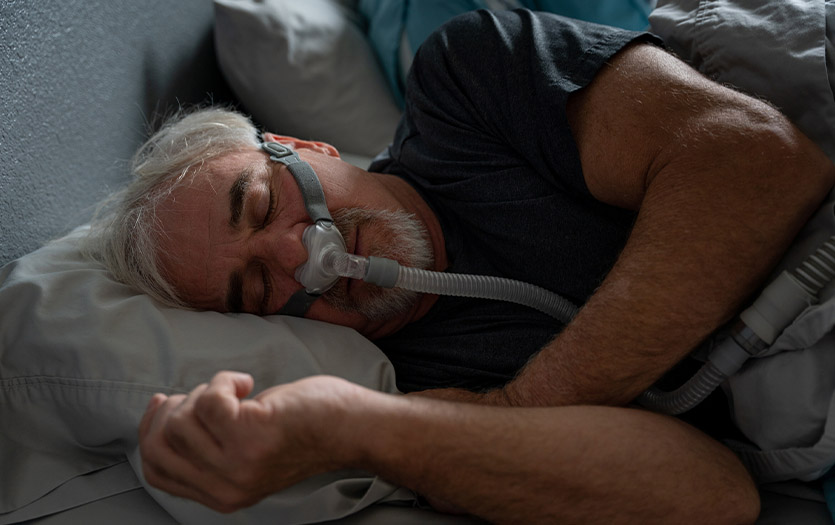
A sleep apnea diagnosis indicates that breathing stops for short periods during sleep. When you stop breathing or have reduced airflow into your lungs, you don't get quality, restorative rest, and can often feel tired during the day. The oxygen levels in your blood may go down, and carbon dioxide levels go up. Over time, these deficits can lead to other problems, such as high blood pressure and heart disease.
Diagnoses
Sleep apnea can range from mild to severe, based on how often breathing stops over the course of the night. For adults, breathing may stop as few as five times an hour (mild apnea) or as many as 30+ times an hour (severe apnea). These numbers are typically identified by completing an in-home sleep study.
Obstructive sleep apnea is the most common type, and often occurs because your airways are partly or entirely blocked.
Helpful habits
Making changes to your sleep routine can aid in alleviating the effects of obstructive sleep apnea. Here are some changes to consider:
Sleep on your side. This may eliminate mild sleep apnea. Try this trick: Sew a pocket in the middle of the back of your pajama top. Put a tennis ball into the pocket and stitch it shut. This will prevent you from moving onto your back while you sleep.
Raise the head of your bed. Put bricks under the legs of the bed to raise the head 4 inches (10 cm) to 6 inches (15 cm). You can also use a special pillow (called a cervical pillow) when you sleep, which will keep your head in a position and reduce sleep apnea. Unfortunately, using regular pillows to raise your head and upper body won't work.
Sleep in your CPAP every night. If you are using a continuous positive airway pressure (CPAP) machine to help you breathe, don’t miss a night. If you don't wear it all night, every night, your symptoms will return and not resolve.
Your doctor may also suggest that you use a breathing device to keep your airways open while you sleep. This could be a device that you put in your mouth, or strips or disks placed on your nose.
Lifestyle shifts for sleep
You can make some adjustments to your daily routine to help treat obstructive sleep apnea. Consider:
Losing weight – Weight loss should be part of managing sleep apnea if you are overweight. If you are struggling to make progress, nutritional counseling, daily activity and pursuing professional insights may help.
Limit the use of alcohol and medicine – Drinking alcohol or taking certain medicines, especially sleeping pills, opioids or sedatives before sleep can make symptoms worse.
Get plenty of sleep – Apnea episodes may be more frequent when you aren’t prioritizing or making enough time in your routine for sleep.
Quit smoking – The nicotine in tobacco relaxes the muscles that keep the airways open.
Treat breathing problems promptly – Things like a stuffy nose caused by a cold or allergies can aggravate apnea.
Wear compression stockings (if your doctor recommends them) – People who have sleep apnea and tend to have swelling in their lower legs and ankles may get some relief by wearing compression stockings during the day. Doing so can prevent a buildup of fluid and swelling of the tissues in the nose and throat at night.
When to call a doctor
Watch closely for changes in your health, and be sure to contact your physician if:
- You still have sleep apnea even though you have made lifestyle changes.
- You are thinking of trying a device such as CPAP and don’t have one yet.
- You are having problems using a CPAP or similar machine.
- You are still sleepy during the day, and it affects your daily life.
More articles that can help
The benefits of tracking your sleep and oxygen levels
Is your diet affecting your sleep?
The connection between Afib and sleep
Copyrighted material adapted with permission from Healthwise, Incorporated. This information does not replace the advice of a doctor.



